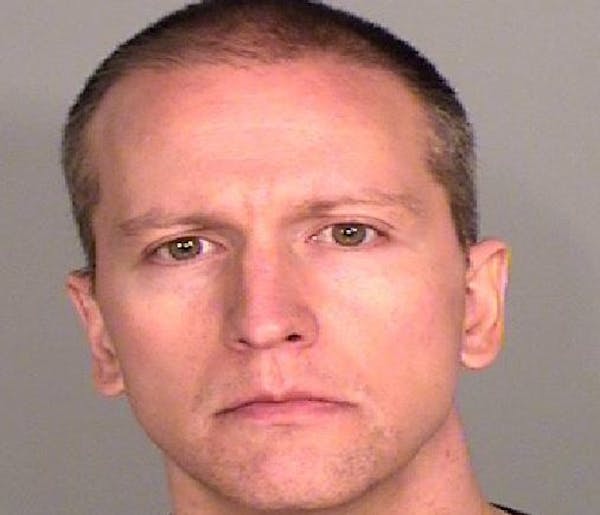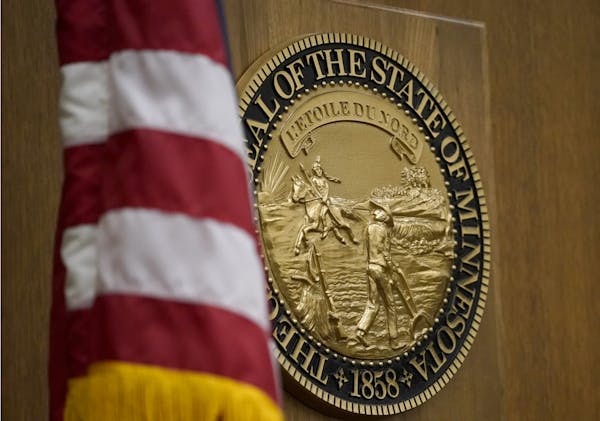 See
more of the story
See
more of the story
Smoke billowed into the brisk Minnesota air from fires set by the reckless individuals responsible for costly damage. Some of them flipped cars, encouraged by the absence of police officers, who'd retreated. I watched as a collection of agitators jumped onto a man's car and tried to pull him from his vehicle before he reversed at high speed, nearly colliding with onlookers.
The city was aflame.
In 2003, a Homecoming riot on the Minnesota State University, Mankato, campus resulted in multiple injuries and 45 arrests. The offenders were mostly white, drunk on alcohol and privilege. The story made national headlines, but it did not lead to longstanding outrage.
Nothing about rioting is cultural. But you would not know that if you perused the recent headlines centering on the buildup of law enforcement officers, security fencing and proposals seemingly aimed at minimizing protests throughout the Twin Cities ahead of Derek Chauvin's trial. The collective message seems clear: What if these Black folks and their allies get angry again?
Last year's disturbance caused more than $500 million in damage across the Twin Cities. Businesses owned by residents of all backgrounds and ethnicities suffered. Yet, the reactions to riots often involve excessive policing and limited empathy, especially for Black and brown demonstrators.
Most people who protested the killing of George Floyd, however, chose peaceful gestures and were not culpable for that devastation. And the pool of the most destructive individuals was racially diverse. Per the Washington Post, most of the 570 arrests were for curfew violations and "all but 44" cases were dropped. Thousands poured onto Twin Cities streets in solidarity to fight injustice last May, not to commit crimes, as the numbers prove.
With authorities amassing resources and manpower ahead of the Chauvin trial, I worry that the effort to avoid riots and protect businesses will center on suppressing the emotions of a traumatized community rather than identifying those directly responsible for indiscriminate destruction.
"The message seems to be that few lessons were learned from George Floyd's killing and the protests in the summer of 2020," said Matthew Delmont, a Minneapolis native and Dartmouth University's Sherman Fairchild distinguished professor of history. "Black people are anxious and angry because the justice system rarely delivers justice in cases of police violence. If city officials can only understand these concerns as potentially criminal, and therefore justifying more policing, it will be impossible to build community relationships that ensure the city is safe for all of its citizens."
Ten months ago, I thought we'd all agreed that justice — and the sweeping changes it demands — would be good for everyone. Now, it appears the hope, by some in positions of power, is to discourage Black folks and their allies from any form of protest because they believe that alone could pose a significant threat.
Dozens of people gathered on a Monday night Zoom to discuss a since-scrapped St. Paul City Council proposal that would have required groups of five or more people to have a permit and would have banned shields and other items from public gatherings and parades. Those gathered viewed it as a way to deter minorities and their allies from protesting during Chauvin's trial.
They said they felt "silenced" and "targeted." They also talked specifically about the ban on shields that could put protesters in danger if they have to protect themselves. The diverse group also cited concerns about who would face the brunt of local law enforcement's buildup months after peaceful protesters, journalists, volunteers and others were struck by rubber bullets in the days that followed Floyd's death.
"With use-of-force laws, where are the rules or regulations for using Mace?" said Chauntyll Allen, director of the St. Paul school board and an organizer with Root & Restore St. Paul, which arranged the protest against the proposal. "What is the criteria for shooting someone with a rubber bullet?"
It is not up to the protesters to separate themselves from the opportunists who might view the coming weeks as a stage for more damage. That's on the authorities, who must draw the critical line between those who present a true threat and those who are simply tired of waking up to read about another unarmed Black man or woman dying during an encounter with police.
They are not the same. But if that line isn't drawn and respected, it could create more challenges for all involved as we await one of the most important verdicts in Minnesota's history.
After the riot in Mankato 18 years ago, local law enforcement officials quickly announced the charges they'd filed, mainly against students who'd done the damage, while clarifying that only a small percentage of the thousands who had been in the streets were guilty. They cited mass intoxication as the disturbance's catalyst.
But an opportunity remains for Minneapolis and its neighbors to illustrate real change with their collective response to upcoming demonstrations. This can become a place where those upset about police killings and the injustice attached to them can raise their voices and their fists without facing the same consequences as those who choose violence.
It can become a place where people of all backgrounds can protest outside a courthouse in Minneapolis in the coming weeks to hold the power brokers accountable for their promises and commitments — and still feel safe.
"We've been peacefully protesting for years," Allen said. "Why, all of a sudden, is there this emphasis like we're the dangerous ones?"





